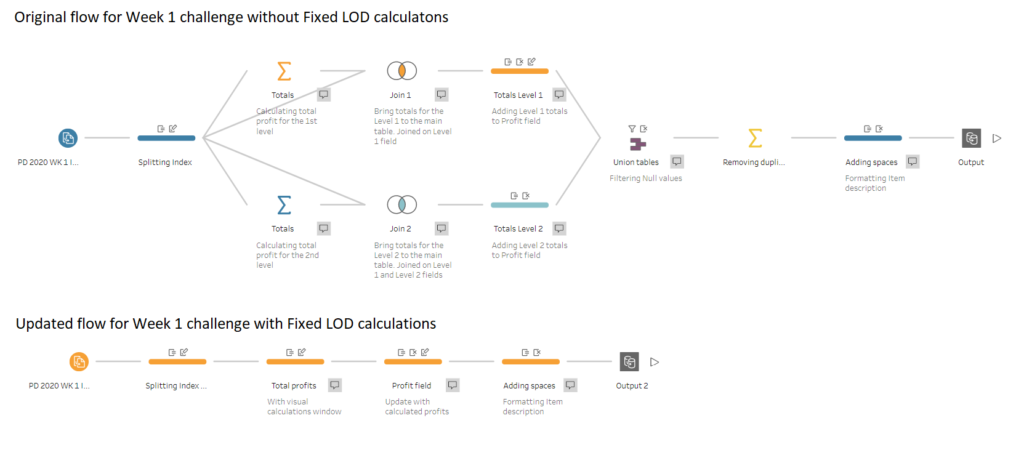

- Tableau prep builder tutorial install#
- Tableau prep builder tutorial drivers#
- Tableau prep builder tutorial driver#
- Tableau prep builder tutorial plus#
- Tableau prep builder tutorial download#
Tableau prep builder tutorial plus#
In the Flow pane, select Aggregate 1, click the plus icon, and select Clean Step so we can clean up the output of the aggregation. This identifies the smallest (earliest) date, which is the first infraction date per driver.įor more information about aggregations, see Clean and Shape Data. Click CNT and change the aggregation to Minimum.
Tableau prep builder tutorial driver#
In the Flow pane, select Infractions, click the plus icon, and select Aggregate.ĭrag Driver ID to the Grouped Fields drop area.ĭrag Infraction Date to the Aggregated Fields area.

(For us, that's Driver ID.) Any field that will be aggregated and presented at the level of the grouped fields is an Aggregated Field.

When using an Aggregate step in Tableau Prep, any field that should define what makes a row is a Grouped Field. We'll use an Aggregate step to do this, creating a mini data set of Driver ID and Minimum Infraction Date. Next, we need to identify the first infraction date per driver. The Infractions sheet should automatically be brought out to the Flow Pane.įor more information about connecting to data, see Connect to Data. Navigate to where you saved Traffic Violations.xlsx and click Open. In the Connections pane, click Microsoft Excel. Initial Aggregation for 1st Infraction Dateįirst, we'll connect to the Traffic Violations.xlsx file.įrom the start screen, click Connect to Data. Make sure you've downloaded the Excel file ( Traffic Violations.xlsx) to follow along. So how do we get there with Tableau Prep? We'll build out the flow in stages, beginning with pulling out the first infraction date, then the second, then shaping the final data set as desired. To investigate our repeat offenders, we want a data set that separates out the first and second infraction dates, and the information associated with each of those infractions, and each row is a driver. A driver with multiple infractions appears on multiple rows, and there's no easy way to tell which was their first or second infraction. The data is currently structured such that each infraction is a row. The driver, date, type of infraction, if the driver was required to attend traffic school, and fine amount are recorded.
Tableau prep builder tutorial download#
Otherwise you can download the Tableau Prep (Link opens in a new window) and Tableau Desktop (Link opens in a new window) free trials.įor this example, we're looking at traffic infraction data.
Tableau prep builder tutorial install#
To install Tableau Prep Builder and Tableau Desktop before continuing with this tutorial, see the Tableau Desktop and Tableau Prep Deployment guide (Link opens in a new window). It is recommended to save it in your My Tableau Prep Repository > Datasources folder. For the second portion, you'll also need Tableau Desktop installed. Note: To complete the tasks in this tutorial, you need Tableau Prep Builder (installed or via the browser) and the data downloaded. At the end, you should have a better sense of how data structure impacts calculations and analysis, as well as greater familiarity with various aspects of Tableau Prep and calculations in Tableau Desktop. The goal of this tutorial is to present various concepts in the context of a real-life scenario and work through options-not prescriptively establishing which is best. In the second stage, Analysis with the Second Date in Tableau Desktop, we'll move on to analysis in Tableau Desktop. In the first stage, we'll use Tableau Prep Builder to restructure the data for our analysis.
Tableau prep builder tutorial drivers#
What was the average fine amount for drivers who never attended traffic school? How many drivers had multiple infraction types? Which driver paid the most overall? Who paid the least? What was the length of time in days between the first and second infraction for each driver?Ĭompare the fine amounts for the first and second infractions. In this two-part tutorial, we'll shape traffic infraction data and answer the following questions: Finding the date of a first event is easy, it's simply the minimum date. A common need in analytics is to determine the date a second event happens, such as when a customer made a second purchase-thereby becoming a repeat customer-or when a driver gets a second traffic violation.


 0 kommentar(er)
0 kommentar(er)
